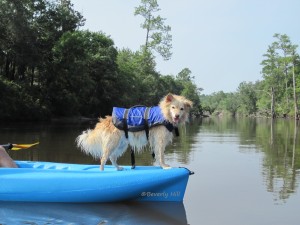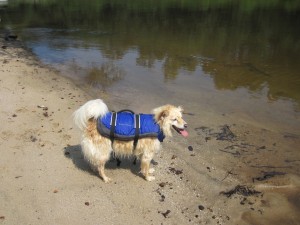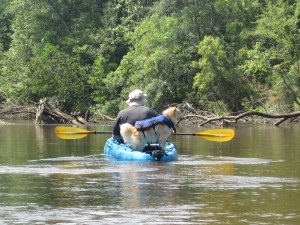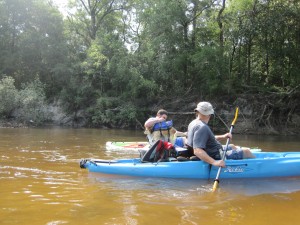Paddlers are a hardy breed, going where landlubbers fear to tread. Naturally, spending so much time on the water often leads to thoughts of bringing along Fido, but before loading up the family dog for the next kayaking or canoeing trip, make sure safety is the number one priority so that a float trip stays enjoyable for both paddler and pooch.
Acclimating a Dog to a Canoe or Kayak
Before ever venturing forth with a dog in a canoe or kayak, take the proper time to familiarize them with the craft out of water. Teach them to step into and out of the boat and let them get comfortable with where they will be sitting. Don’t rush the training and be prepared to do it over the course of several days or even weeks with more timid dogs.
In conjunction with familiarizing the dog with the boat, take the time to also introduce them to swimming if they aren’t already familiar. Some dogs are afraid of the water and it may take longer to acclimate them. Some dogs have a natural affinity to water and swimming while there are those few who may never take to it. For those overly afraid of the water, consider leaving them at home when planning a paddling trip.
This is also a good time to introduce the dog to the life vest that they will be wearing. Dogs should always wear a life jacket when they are in a canoe or kayak even if they know how to swim. If a dog falls overboard it could easily become tired or caught in a strong current. Dog life jackets provide flotation and provide a convenient handle to hoist a dog out of the water and back into the boat if they should fall overboard.
Paddling Tips for Traveling on the Water With a Dog
Start with short trips and gradually build up to longer ones. Let the dog get used to the feel of the motion of the canoe or kayak and the rhythm of the paddle strokes. This also gives the paddler a chance to work with reinforcing important commands like sit and down. A bouncing dog in a kayak or canoe can easily cause the vessel to capsize or cause the dog to fall out. Providing a mat for the dog to sit or lie down on will also provide a place for the dog to gain traction when necessary.
Never paddle with a dog in areas frequented by alligators or similarly dangerous creatures. This can put both the dog and the owner at risk. Try to be on the lookout for other unforeseen dangers as well such as snapping turtles, venomous snakes and strong currents. The dog should also respond readily to a recall command in case it falls out of the boat. Recall the dog to the boat rather than letting it swim to shore.
Keep the dog leashed for easy control, but never leash them to the boat. If the boat overturns the dog could drown. Leashed dogs on the water are controversial. Many recreation areas require a pet to be leashed, but in situations such as a river capsize, the leash could become tangled in a strainer (downed trees or limbs) and the dog could be pulled under and drowned. So use the best judgment for the situation and keep a leash handy or use a waist leash.
Paddling with a dog can be an enjoyable experience for both dog and paddler when done properly. Remember to bring fresh water and food for them and sunblock for sensitive skin on nose and ears. Plastic baggies for removing pet waste will also go a long way towards being a diligent pet owner and paddler.
[amazon_enhanced asin=”B001AOI4DK” /]
This article is copyrighted by Beverly Hill




